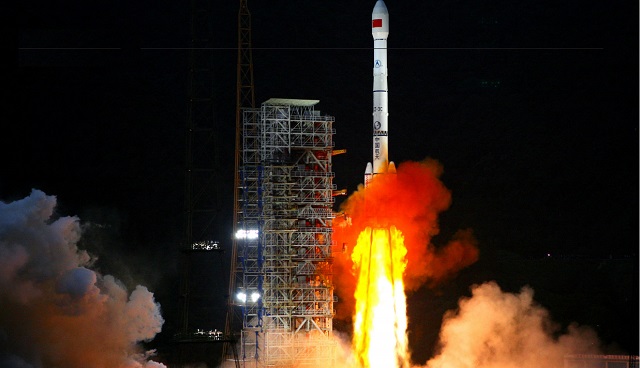
Chang’e-5 will be the first Chinese craft to bring back lunar material to Earth
| THE INDEPENDENT | On Tuesday Nov.24, the Chinese spacecraft Chang’e-5 launched off the coast of Hainan Island in southern China at 4.30 a.m. local time (11.30 p.m. Ugandan time). Chang’e-5 blasted off from Wenchang Satellite Launch Center aboard the Chinese Long March-5 rocket.
Chang’e-5’s mission is to retrieve rocks from the Moon and return them to Earth. If successful, the craft will be the first to collect lunar material in 44 years — and the mission will be a first for China, ushering in the next phase of its increasingly complex lunar exploration programme. Several Chang’e spacecraft, which are named after a Chinese Moon goddess, have reached and touched down on the Moon; one landed on its far side.
Change’e-5 weighs some 8,200 kilograms and contains a lander, ascender, orbiter and returner. Once in lunar orbit, the lander and ascender descended to the Moon’s surface. A couple of hundred metres above ground, the probe was expected to hover and use its camera to survey the surface for any hazards such as large boulders, and to identify a safe place for the lander and ascender to touch down. It touched down on the Moon seven days later on Tuesday Dec.01.
Its landing site was a 55,000-square-kilometre area in the northwestern region of the expansive lava plains known as Oceanus Procellarum, on the Moon’s near side. The precise location was only determined when Chang’e-5 reached lunar orbit, but the eastern area that contains some of the youngest volcanic material was the target, according to James Head, a planetary geoscientist at Brown University in Providence, Rhode Island.
This area is of particular interest to scientists because it could confirm whether the Moon was still volcanically active some one billion to two billion years ago. The age of the rocks is not yet known, but remote observations of the lunar surface suggest that they are roughly two billion years younger than the lava samples collected by the U.S. and Soviet lunar missions in the 1960s and 1970s.
The landing region is “one of the most interesting scientific sites to be explored on the Moon, and the samples, when returned and analysed, will give us a treasure trove of new information that will revolutionise our understanding of lunar history”, says Head.
The craft was expected to collect at least 2 kilograms of lunar samples by scooping up soil from the surface, and drilling up rocks and dust.
With the lunar material on board, the ascender took off from the Moon’s surface on Thursday Dec.03 to reconnect with the orbiter and returner, and transfer the materials. The orbiter and returner will then make their way back to Earth — a distance of around 380,000 kilometres.
Some 5,000 kilometres from Earth, the lander will separate and begin the final high-speed drop to the grasslands of Inner Mongolia, in northern China. The mission, led by the China National Space Administration, is receiving communications support from the European Space Agency to track the spacecraft’s journey through deep space, and its return to Earth in mid-December. Its 800,000-kilometre round trip to the Moon will take about three weeks.
Once retrieved from the landing site, the lunar samples will be transported and stored at the Chinese Academy of Sciences National Astronomical Observatories of China in Beijing. Some material will also be kept at Hunan University in Changsha for long-term safekeeping, according to Head.
If Chang’e-5 proves successful, Chang’e-6 will seek to return samples from the Moon’s south pole in 2023.
The science journal Nature reported that Clive Neal, a geoscientist at the University of Notre Dame in Indiana, says that if it is successful, the mission will mark the beginning of a new era of robotic sample returns from the Moon, which will undoubtedly change scientists’ understanding of the planetary body. “Now we wait for the samples to be collected and returned.”
****
 The Independent Uganda: You get the Truth we Pay the Price
The Independent Uganda: You get the Truth we Pay the Price


